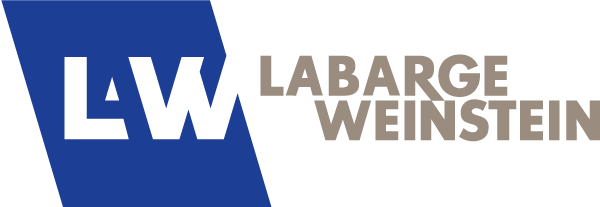Update on the Ontario Emerging Technologies Fund
Over the past summer, our partner Debbie Weinstein has been closely involved in the industry outreach conducted by Ministry of Research and Innovation?s John Marshall relating to the launch of the Ontario Emerging Technologies Fund (OETF), which was originally announced by the McGuinty government in winter 2009. The Fund represents an exciting opportunity for our cash- or syndicate partner-starved clients (startups, venture investors and angels alike) to access government funding in a reasonable and timely way.
If you would like any additional information regarding the OETF, including how to become a ?Qualified Investor? or submit an investment for consideration, we would be happy to assist. Please feel free to contact any of our partners via our website at http://www.lwlaw.com// and we?ll try and help you assess whether the program complements your future financing strategies.
What You?ve Likely Heard Already
OETF is a $250 million direct investment fund administered by the Ontario Capital Growth Corporation (OCGC), announced in February 2009. OETF has been designed as a matching fund for investments in Ontario-based companies, providing syndicate support for qualified investors that have sourced, diligenced and led financings. The Fund will invest $50 million per year during the term of the program, and $100 million will be available for funding over the next 18 months.
OETF will piggybacking on the diligence and pricing efforts of ?qualified? investors that participate in an fund-sponsored approval process, and lead syndicated venture capital transactions.
OETF can invest in private companies, the majority of whose: (i) payroll is paid to Ontario employees and contractors, (ii) workforce is working in Ontario, and (iii) senior officers maintain their permanent residence in Ontario. Targets must carry on business in one of the OETF?s recognized industry categories, including clean tech, life sciences, digital media or communications.
The minimum initial investment requires target firms to be raising at least $1 million (including the matching money from the Fund), and will be made on the same deal structure terms as those made available to the qualified investor. The Fund will match the largest qualified investor up to $5 million per round. The OETF has adopted some stylized deal structure requirements for financing rounds where the syndicate relationships are more complex, or where the transaction contemplates a material follow-on investment by the qualified investor, and we would be happy to discuss those at your convenience.
OETF can do follow-on financings, which is terrific, provided that the maximum amount invested in any single target cannot exceed $25 million.
What You Need to Know and Do Now
Get Your Investors Qualified: Any investor, regardless of residence or location and whether an institutional venture capital firm or angel, can become a ?Qualified Investor?. In order to seek approval, investors are required to submit an application to the Fund and submit to certain background and other diligence checks regarding the investor and its principals. OETF has engaged Toronto?s Northbridge Capital Management Inc. to administer and support granting these approvals. We have been advised that, once OGCG and Northbridge settle upon the set of administrative and diligence procedures to make these determinations, an application to become a qualified investor will take no longer than 15 days to process. Unfortunately, non-institutional investors (angels) are required to reapply for qualified status for each investment that they make.
Get Your Term Sheet Qualified: In order to submit a proposed transaction for approval, qualified investors are required to submit an application to the Fund. OETF has engaged Toronto?s Covington Capital Corporation in order to administer and support the approval and funding of qualified investments. We strongly suggest that interested parties submit applications for investor qualification at the same time as they pursue investment approval. Since accommodating applications this past July, we understand that the Fund has received more than 200 proposals for investment. We also understand that the Fund has every intent of distributing these Funds as soon as possible. It may very well be that the qualified investors who are first to the post will be the first to reap the rewards of their efforts.
Consolidate Your Angels: The most important limitation of the Fund is that it will only match the investment amount of the qualified investor. This is a real challenge for angel syndicates, but Mr. Marshall?s team has indicated a strong appetite and willingness to consider strategies to consolidate angel investments under a corporate, partnership or trust entity. This should streamline the investor approval process for the affected angels, and by consolidating the Funds to be invested will maximize the OETF?s matching investment in the target.
If You Have A Cross-Border Structure, You?re Still Eligible: Please keep in mind that targets do not themselves need to be Ontario or Canadian companies. If your corporate structure includes a Delaware parent or sister, as with many of our clients? corporate structures, your qualified investors can still try and access the Fund.
If You are in the IAF Pipeline, Be Mindful of OETF Limitations: There are funding limitations where the target has received substantial concurrent Ontario government contributions, including OCE or IAF (Investment Accelerator Fund) funding. Targets should seek advice regarding these restrictions and how they might the affect the target?s status and eligibility for matching funding pursuant to the OETF.
The Fine Print: What You Should Consider Before Engaging the Fund
The intent is that OETF will act as a passive investor, but like any government-sponsored funding program, there are some traps and challenges to engaging the program.
There are some specific minimum deal terms to be reviewed and incorporated into your investment proposals before they are submitted for approval. More important, OETF investments will be subject to call rights in favour of the Fund should the target lose its Ontario footprint after the date of the investment. This should not affect conventional investment exits, which OETF will review and approve in the ordinary course in its capacity as a shareholder. However, if your firm anticipates near-term growth in its workforce and C-class management in the near term, you should get some advice on how those call rights work. It is similarly unclear as to how such rights will mesh with our venture and bridge loan contracting patterns over the last few years.
Overall, our team remains very bullish on the Fund?s potential for stimulating syndicate formation in Ontario, and we would be happy to assist you in engaging the Fund, and working through its eligibility and approval requirements. Again, please feel free to contact any of our partners via our website at http://www.lwlaw.com// and we would be happy to assist.

